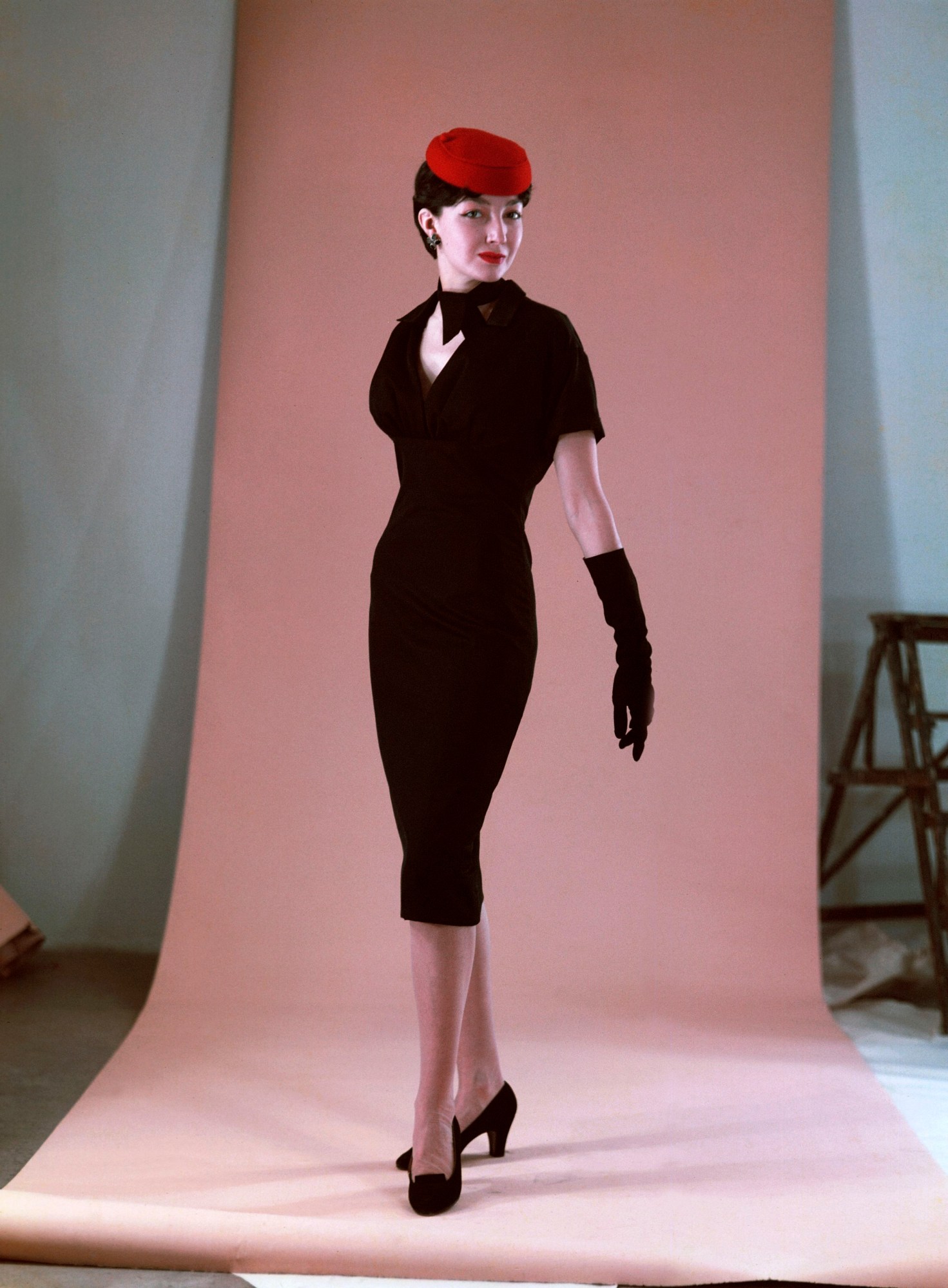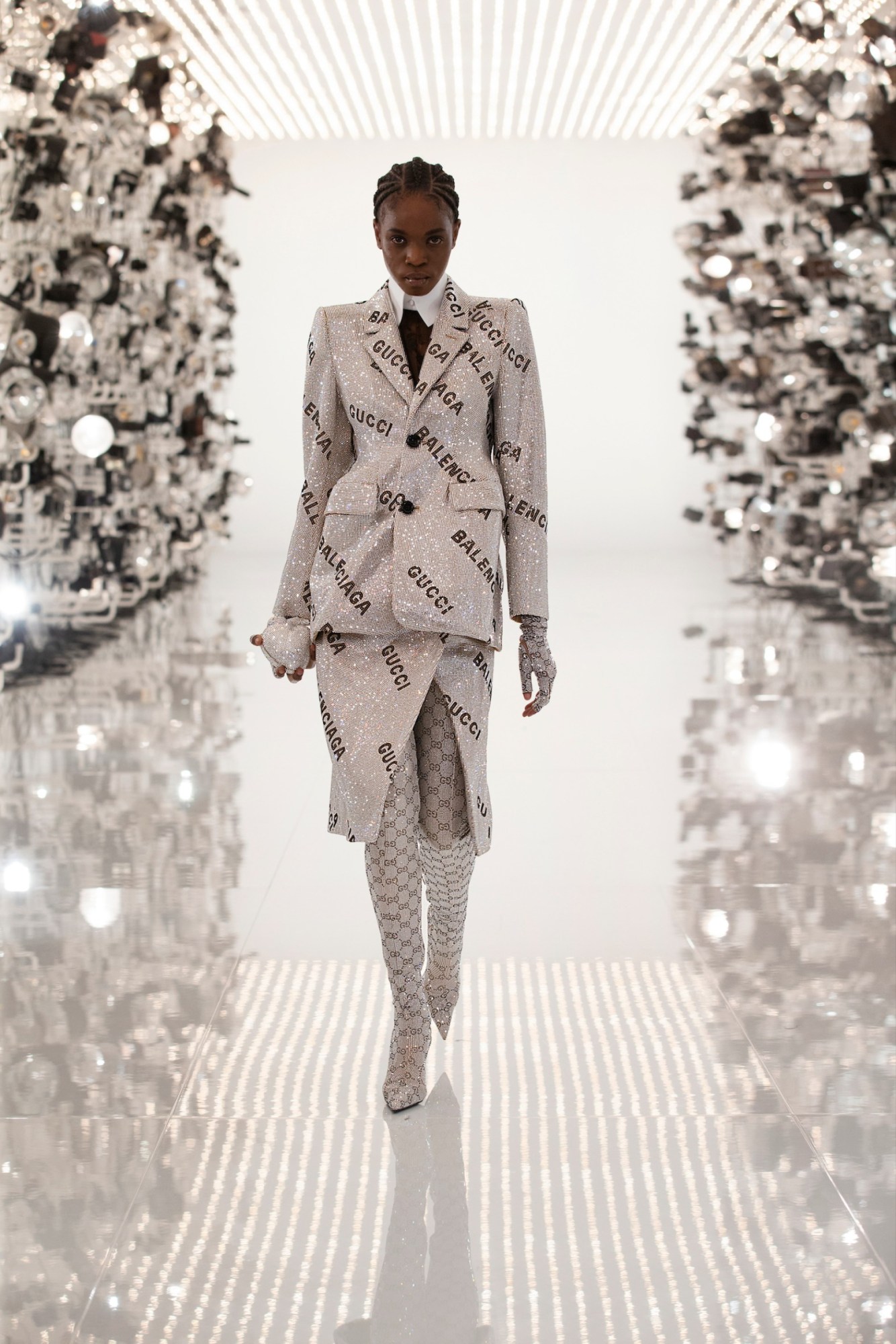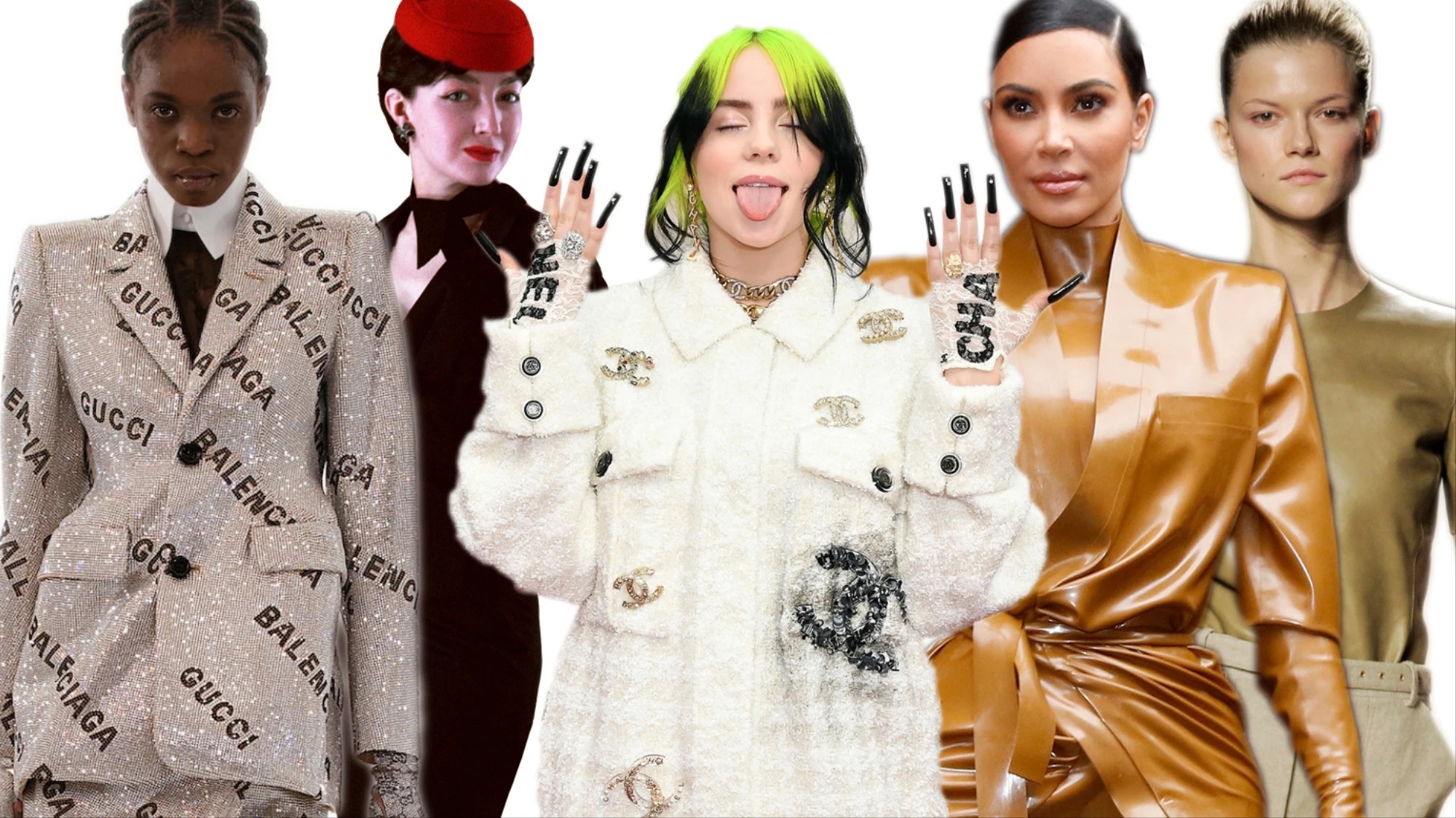It wasn’t long ago that almost every fashion house and designer seemed to have their woman — a more-often-than-not fictional muse who physically and spiritually embodied their values and vision. It wasn’t uncommon to hear designers wax lyrical about her incredibly particular, aspirational lifestyle — ‘She plays tennis!’ ‘She loves to feel the wind in her hair!’ ‘She walks barefoot on the beach!’ ‘She’s an architect!’ Over recent years, though, things have changed — as fashion welcomes a new era of inclusivity, designers are less eager to divulge the specifics of the woman, and therefore the customer, they supposedly design for. On the other hand, the resurgence of fashion’s logomania obsession indicates that literal branding is more sought-after than ever. It all begs the question: What does embodying a brand look like in 2021?
Long before the Balmain Army and the Gucci Gang came to dominate the fashion landscape, a template was put down by some of fashion’s great old houses. Let’s call it the ‘branded woman’. The idea of her was born from a singular preoccupation once shared by all designers: the modern woman. When designers spoke of her, they called her by their name — the Chanel woman being one of the first to become a fully formed archetype. Coco Chanel created an entire lifestyle and put it up for sale — her unique appeal was in her promise to outfit a woman’s aura and attitude as well as her body. To properly complete the Chanel look, composed of the house’s signature menswear-inspired separates, a woman was encouraged to Chanel-ify all aspects of her life.
Likewise, the archetypal Dior woman emerged with the introduction of Christian Dior’s wasp-waisted “New Look” in 1947, a radical counterpoint to the Chanel aesthetic ideal. As the two couturiers became rivals, their opposing philosophies on womanhood further entrenched their respective archetypes. Chanel’s sense of discretion and libertine independence and Dior’s proclivity for coquette-ish romance became diametric templates by which a woman could define not only her sartorial taste, but how she saw herself in the world — and if they couldn’t afford the dresses, they could at least smell like her by wearing one of the houses’ perfumes.

“The post-war economic boom in the United States allowed even middle class consumers to define themselves by the brands that they could purchase,” says Caroline Elenowitz-Hess, a fashion historian whose research focuses on ideals of femininity in the 20th century. “The branded woman was a two-way street, wherein the brand would show their customers who they considered ideals through ads or muses and magazine readers or shoppers could also see themselves as versions of that ideal and self-identify as a branded woman.”
A woman’s status was elevated further if she was able to commit herself and her wardrobe entirely to just one designer (and in turn have a sense of that designer being committed to her). As Cristóbal Balenciaga famously said, “A woman of fashion cannot be elegant unless she patronises a single dressmaker.” After Balenciaga closed his house in 1968 with the declaration that there was no one left to dress, socialite and devoted patron Mona von Bismarck allegedly wept behind closed doors for three days straight.
“The narrow constraints of the branded woman came to stand in conflict with the increasingly inclusive conditions of contemporary fashion.”
This formula went relatively unchallenged until the 90s, when mix-and-match dressing gained popularity, and the mythical ‘branded woman’’s hold over the fashion system wavered. Caroline notes that Anna Wintour’s famous first Vogue cover in November 1988 “showed a turning point in styling because the combination of high fashion (Christian Lacroix couture) and low fashion (acid-wash jeans) emphasised that an artful mix could be better than the designer’s complete look.” Since then, she explains, it’s often been considered more aspirational to combine disparate pieces from different brands than to fully embrace just one. That’s not to say that holistic brand loyalty entirely disappeared, though — from Aaliyah in Tommy Hilfiger to Madonna flying the flag for Tom Ford’s Gucci, major moments peppered the 90s and early 00s, especially as logomania swept through fashion.

Ultimately, the narrow constraints of the branded woman came to stand in conflict with the increasingly inclusive conditions of contemporary fashion. Even though designers of the 20th century swore they were designing for a new and highly nuanced breed of woman that only they understood, in reality, she was always the same. Her predilections may have varied, but she was invariably thin, white and wealthy, usually European, and often in possession of some sort of glamorous creative class girlboss job — a sought-after architect or an artist, for example.
Perhaps those are still the women designers are trying to sell to, but after many, many calls for increased diversity and equity across the fashion industry, it’s not en vogue to be so forthright about it. In trying to represent and appeal to a wider, more diverse audience, a brand can no longer draw its ideal woman with such an exclusive hand.
Plus, fashion brands have become exponentially more global, and thus need to appeal to a wider market as they try to sell to women in every corner of the world. Take it from Mrs. Prada herself: “I say this all the time, but I really believe it: the world today is so complicated, so full of different peoples, countries, religions — you cannot have a unitary vision,” Miucca said last July.
The old school ‘branded woman’ is also at odds with the larger variance of identity expression in contemporary culture. Increased conversation around intersectionality has created a more complex framework for understanding identity. While it was once viewed as somewhat rigid and rote, identity is now akin to a fluid multiverse — it’s quite common for an individual to express multiple social identities at once, and it’s also not unusual for those affiliations to change over time.

“The contemporary consumer isn’t tied to a single aesthetic or trend — their view on identity is fluid and encompasses their values,” says Eve Lee, founder of The Digital Fairy, a creative studio and consultancy. Brands pinning a single woman as their ideal risk precluding those who see their own identity as more complex and malleable than what she embodies. “In the age of warp-speed aesthetic trends and the ultra-specific splintering of identity groups, brands looking to design for one archetypal woman are going to lose out to brands that are speaking to the true multiplicity of identity expression,” notes Carrera Kurnik, director of culture and consumer insights at Fashion Snoops.
“People are fatigued of being told a way to be — a representation of self — that is, of course, impossible.” — Richard Malone
Indeed, many of today’s most progressive designers actively reject the ‘branded woman’ entirely in their creative process and marketing. London-based designer Richard Malone, whose latest collection takes inspiration from the protective female-led spaces he grew up in, believes the concept “creates [an] idealised version of a woman that brands try, time and time again, to convince us exists, even though she categorically does not,” he explains. “I believe people are fatigued of being told a way to be — a representation of self — that is, of course, impossible.” Instead of manufacturing a definitive ‘Richard Malone woman’ and then nudging the followers of his label in that direction, Richard prioritises really getting to know his clients through conversation and careful attention to the wants and needs of each woman he works with — a process he describes as vital and rewarding. In a way, you could argue that Richard’s intimate approach comes close to a return to the approach of the old school couturiers mentioned above — the key difference, though, is that it’s inclusive by design, reflecting and accommodating the wants of a multitude of clients.
Still, if designers and consumers alike have lost their love for these archetypes, what’s taken her once unshakeable place in fashion’s mythmaking system? Well, it would be remiss to say she’s totally gone. Gen Z’s love for wearing logos is, you might argue, a testament to that — but there’s more to that obsession than just cyclical logomania. In a fashion landscape where diversity and individuality are increasingly valued, the most visceral way of engaging with a brand is to wear its logo as a casual gesture, rather than commit to embodying its design ethos. Think Billie Eilish’s head-to-toe Chanel look at the Oscars — every element of her outfit, including her acrylic nails, featured some variation of the brand’s monogram.
“The branded woman has been replaced by a series of aesthetic designations that allow for more flexibility and room for play.” — Carrera Kurnik
Fashion’s ceaseless collaboration economy also proves that we’re in a new era of branded concepts. Every passing season delivers a larger assortment of crossovers, and they keep getting bigger and bolder. The logo-heavy lilt of Gucci and Balenciaga’s groundbreaking ‘mutual contamination’ shows that branding is more crucial than ever.
Indeed, brands looking to stay truly relevant must also embrace the conditions of aesthetic culture, a term that describes contemporary consumers’ tendency to agilely hop between aesthetics and the identities associated with them. “The branded woman has been replaced by a series of aesthetic designations that allow for more flexibility and room for play,” says Carrera.
For young people, epitomising a brand is no longer the only ideal. Epitomising an aesthetic like cottagecore or regencycore, can be just as desirable, and these aesthetic fixations often last for only a short duration. This is a behavior encouraged by social media — it’s quite common to adhere to one aesthetic for a few posts before switching to a different one, especially on lightning-fast apps like TikTok. And because these aesthetics are fully online and open-source, meaning they can be modified by anyone who chooses to participate, their guidelines are malleable and ever-changing and thus well-suited to Gen Z’s understanding of identity as fluid.

This stays true even outside of aesthetic land: “You can be a Celine woman in your mind, loving minimalism, but in reality have to do most of your shopping at H&M,” notes Jackie Chiquione, senior trend forecaster at MADE Trends. Designers simply don’t have the same level of authority over trends and specific looks that they did in the past. “Luxury brands once had more authorship and were able to cultivate an identity through tightly controlled touchpoints,” says Eve. The internet changed that — a world of democratised aesthetic inspo is now just a few Pinterest clicks or Instagram follows away.
Ultimately, the branded woman, always a myth, has lost her footing in a world where social media allows us to make myths of ourselves. Her successor is not another kind of effigy created in a couturier’s studio or an echoey conference room, but a fluttering reel of girls conceived and built online through memes and moodboards. E-girls, VSCO girls, even Christian girl autumn girls — laden with the symbolic value of logos or without — they dominate the quick-tongued language of aspiration today.






